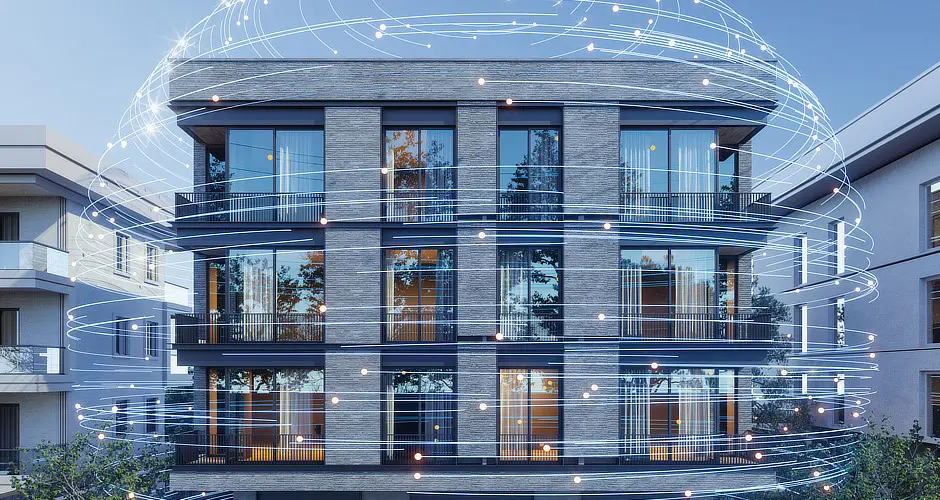
Smart buildings aren’t just a concept of the future, they’re rapidly becoming a standard for operational efficiency, sustainability and occupant wellbeing. But what truly makes a building “smart”? It’s not just about connected devices or automated systems, it starts with smarter data.
Across Australia and New Zealand, building owners and facility managers are under increasing pressure to improve energy efficiency, meet sustainability goals, and create healthier indoor environments. With growing regulatory expectations and investor focus on environmental, social and governance (ESG) performance, buildings must now do more than just function, they must be measurable, transparent and optimised.
To do that, visibility into building operations is essential. Without the right data, decisions are reactive, opportunities are missed, and inefficiencies persist. From energy usage and equipment performance to air quality and occupancy patterns, smart buildings begin with a clear, data-driven understanding of what’s happening inside their walls and what needs to change.
The Visibility Gap in Traditional Building Operations

Despite advances in building automation, many facilities across Australia and New Zealand still operate with limited insight into their day-to-day performance. Energy bills arrive monthly, HVAC systems run on fixed schedules, and maintenance is often reactive. In some buildings, environmental conditions like temperature, humidity or air quality are not actively monitored at all.
This lack of visibility makes it difficult to optimise operations or reduce costs. Without clear data, facilities teams are left guessing where energy is being wasted, when equipment is underperforming, or how indoor conditions are affecting occupant comfort and productivity. As a result, even well-intentioned efforts to improve efficiency or sustainability can fall short.
Data silos and outdated monitoring systems also create challenges when it’s time to report on performance, especially for companies aiming to meet ESG goals. Without reliable, easy-to-access data, proving compliance or progress can become a manual, time-consuming task.
To close this visibility gap, buildings need smarter ways to collect and analyse operational data. That’s where smart building solutions come into play.
Why Data Matters: From Cost Savings to ESG Compliance
Smarter data isn’t just a nice-to-have feature in building management. It is the foundation for making confident, cost-effective decisions that drive both operational performance and environmental responsibility.
When facility managers have access to timely and accurate data, they can pinpoint inefficiencies, reduce energy usage, and prevent costly issues before they escalate. For example, continuous monitoring of HVAC usage can reveal unnecessary energy consumption during off-peak hours, while air quality sensors can help maintain healthier indoor environments without over-ventilating.
This kind of insight also plays a growing role in meeting ESG expectations. Investors, tenants and regulators are increasingly demanding transparency around how buildings impact people and the planet.
In Australia, the Treasury Laws Amendment (Financial Market Infrastructure and Other Measures) Bill 2024 marks a shift toward stronger corporate accountability in sustainability reporting. As these standards evolve, property owners will need robust data to demonstrate their performance and compliance.
Smart building platforms that collect environmental and operational data in real time make ESG reporting faster, easier and more credible. Instead of manual audits or scattered spreadsheets, building managers can show concrete progress backed by data, supporting green certifications, attracting sustainability-minded tenants and improving investor confidence.
Transforming Insights into Action with Smart Technology
The power of building data lies not only in collecting it, but in how it is applied. Modern sensor technologies enable buildings to move beyond basic reporting and into ongoing, automated improvements.
Wireless sensors placed throughout a facility can monitor factors such as temperature, humidity, energy use, carbon dioxide levels, occupancy and equipment performance. These insights are gathered in a central platform that enables real-time alerts, trend analysis and proactive management.
For example, if sensors detect a rise in humidity in a data storage room, facility managers can act quickly to prevent equipment damage. If a meeting room remains unused for days at a time, heating or cooling to that area can be reduced, cutting unnecessary energy consumption. These small adjustments, guided by reliable data, deliver meaningful savings and reduce environmental impact.
Solutions like Thinxtra’s Smart Building platform offer a cost-effective way to introduce these capabilities without major infrastructure changes. With a simple integration, buildings of any age can be upgraded to operate more intelligently and efficiently.
Smarter, Simpler and Built for Today’s Buildings

Transforming your building into a smart, data-driven operation doesn’t need to be difficult or expensive.
Whether you want to monitor temperature, air quality, energy use, occupancy or equipment health, Thinxtra’s smart building solution gives you the insights you need without adding complexity. You can quickly identify where you’re losing energy, spot patterns in usage, and get alerts when something’s off before it becomes a big problem.
What’s more, it’s built with compliance in mind. As Australia moves ahead with new regulatory frameworks like the Treasury Laws Amendment (Financial Market Infrastructure and Other Measures) Bill 2024, having the right data on hand isn’t just smart, it’s essential.
What Building Operators Gain by Embracing Smart Data
Forward-thinking building operators are already seeing how smarter data transforms their operations. With real-time insights into energy use, equipment performance and environmental conditions, they are no longer reacting to problems after the fact. Instead, they are preventing them before they cause disruption.
This level of visibility helps cut unnecessary costs, reduce maintenance workloads, and ensure every asset in the building is working as it should. The result is more efficient operations and better use of resources.
Tenants and staff notice the improvements too. Comfortable temperatures, clean air and smoothly running facilities contribute to a more positive experience for everyone. In a competitive market, these small upgrades can make a big difference in satisfaction and retention.
Sustainability is no longer a bonus; it is an expectation. With accurate and consistent data, operators can show real progress toward environmental goals and make compliance reporting easier and more reliable. Being ready for the future starts with having the right information today.
Smarter Building Performance Starts Here
If your building is still relying on manual reports or outdated systems, it is time to make a change. Better data leads to better decisions, which means lower costs, happier occupants, and stronger environmental performance.
Thinxtra’s smart building solution is designed to be easy to implement and simple to scale. It works alongside your existing BMS systems, providing valuable insights without disruption.
Curious about how it could work for your property? Reach out to our team today to explore what smarter building operations could look like for you.


